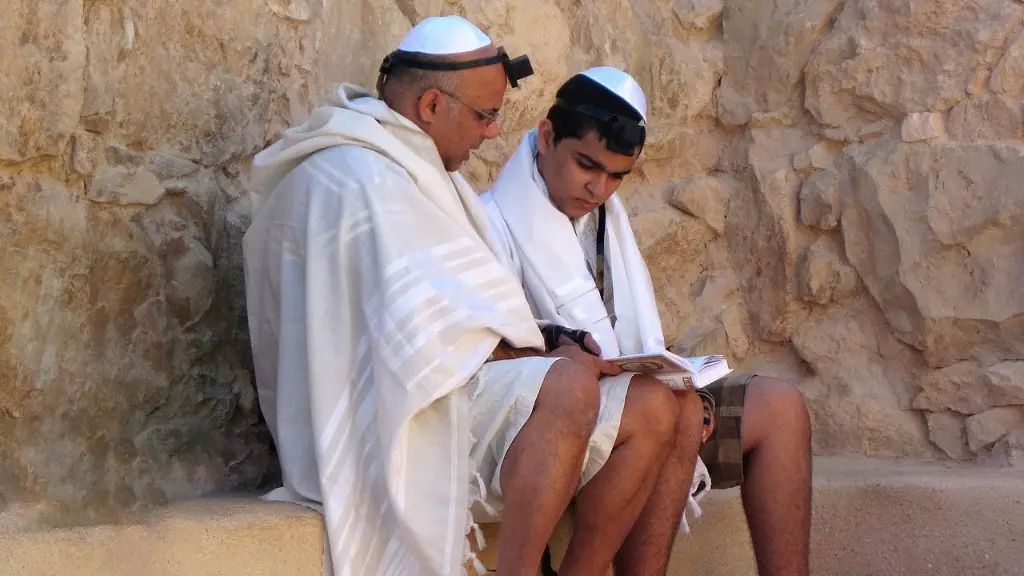What Is Advent In Christianity
Advent is one of the crucial times in the Christian calendar. It is the time leading up to Christmas when Christians prepare for the birth of Jesus. During this period, believers attend services, read scriptures and prepare for the arrival of Christ. The word “Advent” is derived from the Latin term meaning “Coming” and it is the anticipation of the coming of Christ that is the focus of Advent.
Advent begins the fourth Sunday before Christmas Day and lasts through Christmas day. This year Advent will begin on Sunday November 29th and Christmas Day will fall on December 25th. Historically, Advent has celebrated Jesus’ twofold presence in person and in power, as we look towards Jesus’ first coming as a baby in a manger and look to when He will come for a second time as King and judge. Special emphasis is placed on the figure of Jesus during this season.
In the past, Advent had a special focus on repentance, as we reflected on our sin and the need to accept Jesus’ grace. This is still true today, however, it is important to note that repentance is only one aspect of the season. As Christians, we are also preparing to celebrate the joy of the Incarnation and the hope of Jesus’ glorious promises. This season of reflection is accompanied by a variety of customs, including the use of an Advent wreath and the hanging of an Advent garland.
Advent serves as a reminder that Jesus is coming and it encourages us to remember God’s promises and his faithfulness in the past. It can be difficult to wait, but it is important to remember that Advent is a time of patience, anticipation, and hope. During this season, we can prepare our hearts by meditating on God’s Word, spending time in prayer and contemplating the life to which God has called us.
Another important aspect of the Advent season is observing special feast days and holidays, such as the Immaculate Conception, St. Nicholas Day, and the Nativity of Jesus. As Christians, it is important to commemorate the work of Jesus on Earth. By participating in Advent customs and reflecting upon Jesus’ teachings, we can celebrate His coming, cultivate our faith and prepare for his return.
Finally, it is important to mention the spiritual discipline of giving. Throughout Advent, we can choose to engage in acts of kindness and generosity. Whether through volunteering, donating to charity or simply providing a listening ear, we can demonstrate God’s grace by opening up our hearts to those in need.
The Purpose of Advent
The purpose of Advent is multifaceted, providing an opportunity for cultural, spiritual, and personal growth. Advent encourages spiritual reflection, helping people to see that the hope of a world redeemed lies in the coming of Christ. During this time, Christian communities try to live out the ideals of justice and peace described in scripture, striving to be a reflection of Jesus’ love found in the world.
Advent also serves as an important liturgical season, uniting church members as they prepare for the celebration of Jesus’ birth. Its stories focus on God’s promise of salvation and remind us of the ever-presence of God in our lives. During this time, believers engage in activities such as prayer, scripture study, fasting and almsgiving to reflect on the importance of those truths.
Advent presents a wonderful opportunity to renew our commitment to the Lord in preparation for his coming. The heightened spirituality of Advent encourages us to focus our attention and energy on Jesus, leading us to discover the power of his love and grace in our own lives. It also encourages us to remember the suffering, injustice and need in the world, reminding us that Jesus was sent to bring hope, peace, and joy to all.
Symbols Used During Advent
Advent is associated with a variety of symbols. One such symbol is the Advent wreath, which serves as the focal point for many Advent observances. This wreath is traditionally composed of four candles, which are lit each week of Advent. These candles are mostly of a purple or blue hue, each representing an important aspect: Hope, Love, Joy, and Peace.
The Advent garland is another important symbol of Advent. This is a strand of red, Christmas-tree lights that are draped around the house in a symbolic reminder of Jesus’ coming. The number of bulbs corresponds to the number of days in Advent: 24, including Christmas Eve.
During Advent, many Christians also incorporate religious icons into their homes. These may range from simple physical symbolism such as the Christmas tree, or they may be more elaborate decorations depicting manger scenes, or the birth and life of Jesus.
Additionally, people often sing traditional carols during Advent. These songs were created to bring comfort and joy and are important in symbolizing the anticipation of Christ’s birth. While some of the carols used to celebrate Advent may be familiar, many religious communities explore and share new traditional songs that reflect the themes of hope, faith, and preparation.
The Role of Family During Advent
For many Christians, celebrating the season of Advent is a family affair. Whether it is a traditional Advent wreath, special meals, or group devotions, the Advent season is an opportunity to strengthen family ties and create memories. Special activities, such as visiting a living Nativity scene, a candlelight vigil, or an Advent party can be fun ways to experience Advent with a family.
For those who may not have family nearby, it is important to remember that Advent can still be meaningful. Through faith-based activities, such as Bible study, volunteering, visiting a church, or seeking out prayer partners, individuals can deepen their faith and create new relationships with other Christians.
Regardless of the circumstances, Advent is a special time of year for family and friends to celebrate and share the joy of Jesus’ coming. It is a time for reflection, for prayer, for gratitude, for celebration, and for new beginnings. When we slow down, take time for others, and focus on the true meaning behind Advent, the holiday season can be a time of tremendous joy and spiritual renewal.
The Final Week Of Advent
As we reach the final week of Advent, believers prepare to celebrate the arrival of Jesus. During this time, individuals remember the importance of Jesus’ ministry, reflecting on the events that led to Jesus’ incarnation, crucifixion, and resurrection. By engaging in the ideas and themes of Advent, Christians can rest assured that Jesus is coming and that He will fulfill God’s promises.
This season of preparation brings forth joy, peace and hope. During this season, individuals can share the love of Christ with the world by engaging in meaningful activities and behaviors that reflect the spirit of Advent. In turn, these acts will bring others on a journey towards Jesus, as we prepare for his return.
As part of the Christmas celebration, many churches hold special activities, such as special services, processions, and candlelight vigils, to commemorate the arrival of Jesus. By attending these services, meeting with those devoted to Christ and engaging in special practices, Advent provides an opportunity for people to experience renewal in the journey of faith.
Conclusion
The season of Advent is a powerful time in the Christian calendar. It is a celebration of the past, present, and future of our faith, as we wait with anticipation for the coming of Jesus. Through meaningful activities, Advent encourages us to rest in the promises of God, to celebrate the joy of Jesus’ birth and to share His love with the world. It is an opportunity for us to create an atmosphere of peace, compassion and joy, providing a reminder of the power found in Jesus’ life.

